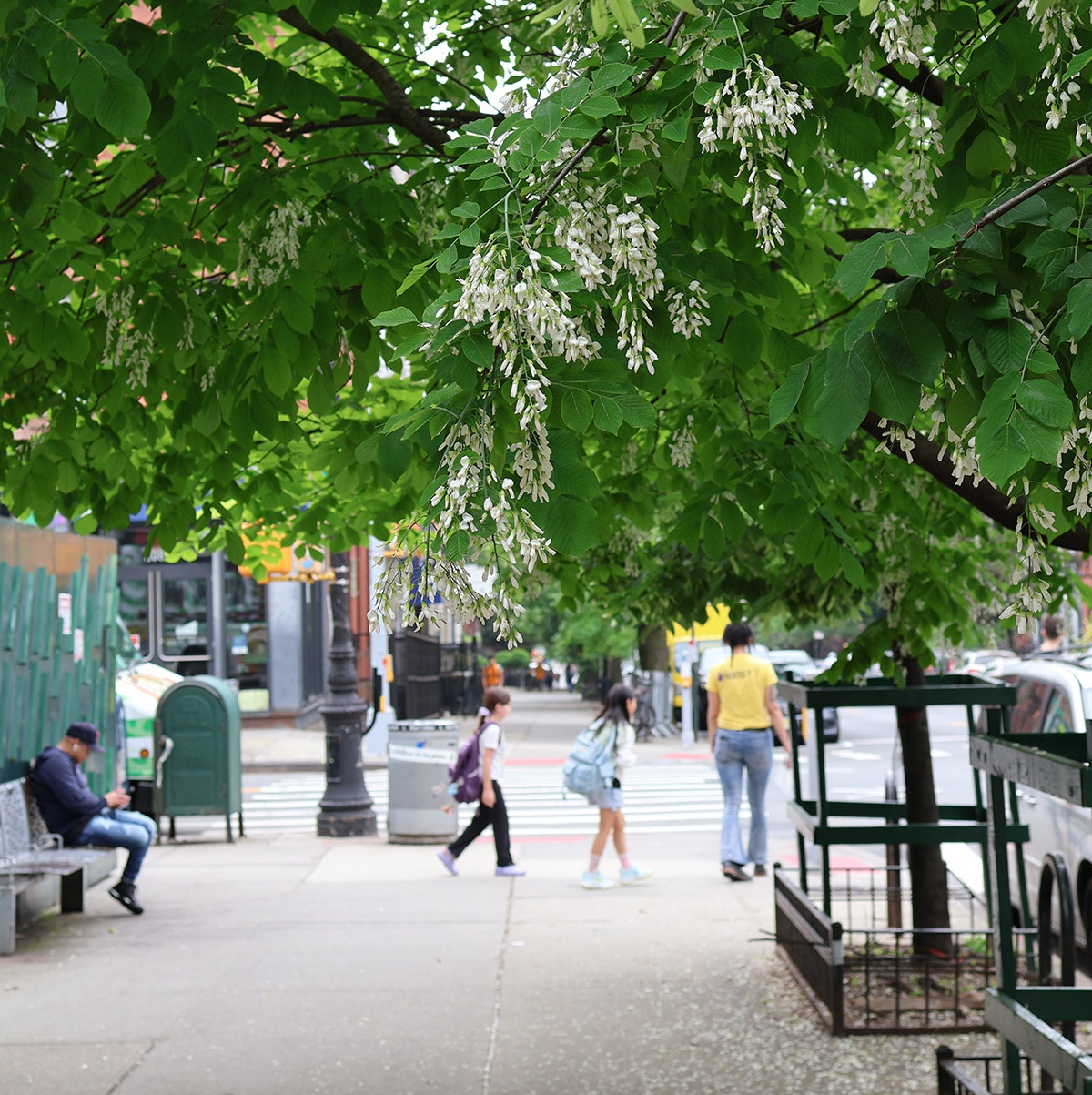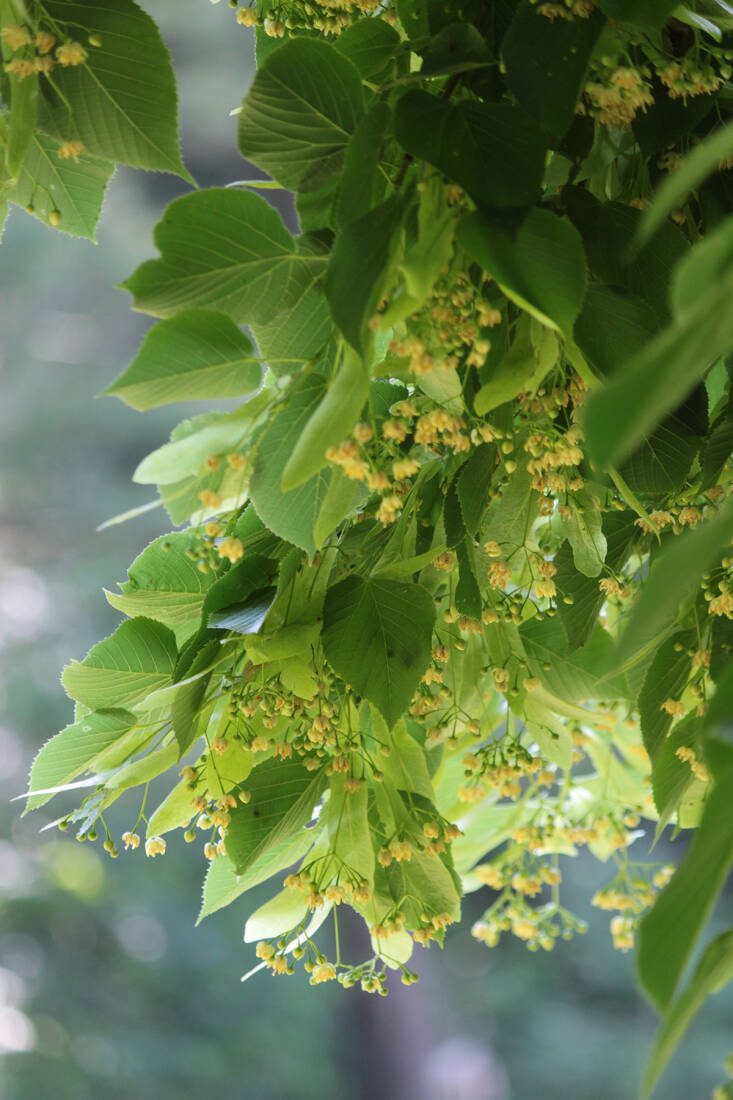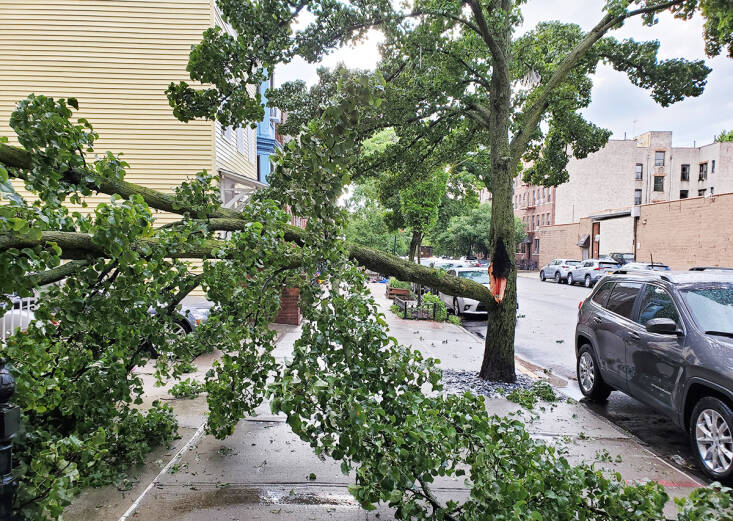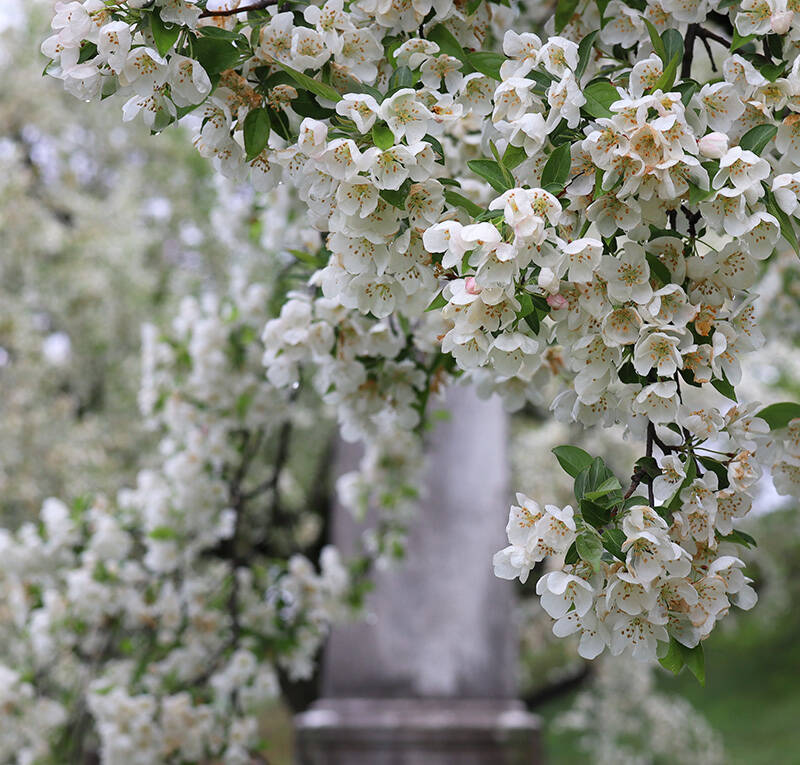


When I signed up for a Citizen Pruners course in 2022 to qualify me to care for the street trees of New York City, I could not have foreseen that by 2025 two key tree programs for the city would have been axed. Street trees cool us quietly, extending their branches over tarmac and concrete, shading the sweltering summer grid. Their pools of shade interrupt wide, hot avenues. Their cathedraled arches meet above narrower streets. There is the marbled, urban-camouflage bark of plane trees in winter. The scent of lindens in mid June. The sudden blaze of Zelkova in late October. There is food and shelter for birds, pollinators, and other invertebrates. The trees withstand compacting foot traffic, damage from trucks, and the constant, contaminating gifts of urine and poop from passing dogs. Their narrow beds are sometimes paved over, or raised with extra soil—a well-intentioned yet slowly fatal mistake.
They need help.

There is also the absence of trees. In summer, unshaded city neighborhoods gasp with heat. Lower income and previously industrial neighborhoods typically lack a tree canopy and are measurably hotter than wealthier blocks with more trees. The species and placement of trees matters, too. Tree Folio NYC is a digital 3D model created by Cornell researchers to simulate how actual New York street trees create shade.

In my own, comparatively leafy neighborhood near the great green lungs of Brooklyn’s Prospect Park, there is an empty tree bed (we call them tree pits) where a storm felled a weak-crotched callery pear years ago, and where only weeds grow now. I requested a new tree by dialing the city’s 311 help line, but no tree arrived. Why?
While there was always a backlog of street trees to be planted, the answer lately is unsettling: Recently, the Department of Parks and Recreation (also known as NYC Parks or just Parks) quietly killed an almost 18-year initiative that empowered any person to request a new tree to be planted by the city in an empty tree bed. It would be done, but there would be a wait. All you had to do was call 311 and say, Tree please. The official reason is that Parks is focusing on planting trees in underserved communities, rather than providing trees more diffusely, scattershot-style. But the real reason is likely money. No money.

For the ease of 311 (Tree One One?) thank Bette Milder and former mayor Michael Bloomberg. Midler’s New York Restoration Project launched the Million Trees Initiative in 2007 along with Parks, as part of Bloomberg’s PlaNYC 30 initiative, a medium-term strategy to make the future city more resilient in the face of accelerating climate change. (Despite skepticism at the time, that 10-year goal was met three years early and the millionth tree was planted in 2015, under Bill de Blasio’s mayorship.)
Along with the recent death of that tree-planting-by-request program, came the axing (sorry) of the Tree Risk Assessment Program by Parks, which monitored trees for problems. As anyone who has ever grown anything will tell you, it’s not just the planting of a tree that matters. It’s that tree’s ongoing care, especially in its first year of vulnerable and unsupervised life on the unsparing streets.

So who’s looking out for the trees? The answer is you. Us. The people who benefit from them.
The Citizen Pruners certification course is offered by the not-for-profit Trees New York, established in 1976, when the street and park trees of New York City were abandoned by official help. Under their tutelage students of all ages and backgrounds learn about, and how to care and advocate for, the street trees of the city. I signed up for the class because I often walked past or under trees that made me twitch to go home and fetch a hand saw. Suckers sprouting from the base, dead branches sticking out, low branches annoying both humans and passing trucks, who would break them in passing. I wanted to groom and to neaten. While I grew up with a gardener-mother who taught me to prune and to saw, there was a lot I didn’t know, and a lot about trees that I didn’t understand. (Also, the thought of brandishing a lethally-toothed weapon on a city sidewalk minus some kind of authorization gave me pause.) The Citizen Pruners class books up fast and after missing registration once, I signed up within seconds of receiving word that the new classes were open.

In 2022 the classes were Zoom’ed (they are in-person, now) and we learned about tree biology and identification, tree pests, and common challenges to street trees. We learned the theory of pruning and about the all-important three-part cut. And we met in person for a demonstration and practical lesson on the Upper West Side, where our class of hopeful citizen pruners trimmed trees under the sharp eye of veteran arborist Bruce James.

When I graduated with 96% I felt a thrill. My Citizen Pruners identification card arrived soon in the mail. When I trim and prune I am met with only a few funny looks and more interested questions. (One of the “True or False” statements on the final exam is: “It is always a good idea to ignore pedestrians who question why you are pruning a tree on the street.” I’m not going to tell you the answer.)

Some context for the city’s street tree cuts, because I’m not beating up on Parks: NYC Parks receives in funding less than 1 percent (and closer to 0.5 percent) of the City of New York’s annual budge. For the fiscal year 2025, if you’re curious, that meant approximately $583.7 million within a budget of $109.4 billion. Yet Parks, according to their figures, cares for “2,000 parks, 1,000 playgrounds, 36 recreation centers, 12,000 acres of natural areas with 4.9 million trees, over 660,000 street trees, and 160 miles of shoreline.” This year, 367 Parks jobs were proposed to be cut, to save money. There was a hiring freeze. The programs that were cut included Swim Safety and Tree Risk Assessment.

As the world warms, we need trees more than ever. In a heated New York City mayoral, race not a single candidate for mayor has mentioned the greening of the melting city they propose to govern.
Trees need help. More importantly, we need theirs.

* On the interactive NYC Tree Map you can search for particular trees and learn how much storm water they intercept, how much energy they conserve, and the quantity of air pollutants they filter.

For more subscriber-only content, head here.



v5.0
When you register as a free Member of the Remodelista family of websites (Remodelista, Gardenista, and The Organized Home), you gain access to all current posts plus 10 archived posts per month, our internal bookmarking tool, and the community bulletin board.
Member benefits include:
For $5/month ($59.99 paid annually) you'll enjoy unlimited, ad-free access to Remodelista, Gardenista, and The Organized Home and all the benefits of Membership.
Subscriber benefits include:
For $5/month ($59.99 paid annually) you'll enjoy unlimited, ad-free access to Remodelista, Gardenista, and The Organized Home and all the benefits of Membership.
Subscriber benefits include:
Benefits include:
For $5/month ($59.99 paid annually) you'll enjoy unlimited, ad-free access to Remodelista, Gardenista, and The Organized Home and all the benefits of Membership.
Subscriber benefits include:
When you register as a free Member of the Remodelista family of websites (Remodelista, Gardenista, and The Organized Home), you gain access to all current posts plus 10 archived posts per month, our internal bookmarking tool, and the community bulletin board.
Member benefits include:
If at any time you want to become a Subscriber and enjoy unlimited, ad-free access to all our content, just go to the My Account link and choose Subscribe.
Have a Question or Comment About This Post?
Join the conversation